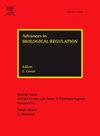果糖-1,6-二磷酸酶有望成为抗癌治疗的靶点。
IF 2.4
Q1 Biochemistry, Genetics and Molecular Biology
引用次数: 0
摘要
果糖-1,6-二磷酸酶(FBP)是葡萄糖生成的一种调节酶,它还通过蛋白质之间的相互作用,以非催化的方式影响细胞周期依赖性事件、线粒体生物生成和极化、突触可塑性甚至癌症进展。FBP 通过阻断 HIF-1α 的转录活性和调节 NF-κB 的作用来降低细胞的糖酵解能力,并通过与 c-MYC 结合来影响氧化代谢。由于 FBP 限制了细胞产生能量的潜力,而且在癌细胞中观察到 FBP 数量减少,因此 FBP 被认为是一种抗癌蛋白。癌细胞过量表达醛缩酶 A(ALDOA)也证明了这一点,醛缩酶 A 是一种促癌蛋白,可与 FBP 结合,并有可能阻断其抗癌活性。有趣的是,只有 FBP 的肌肉同工酶(FBP2)与 ALDOA 有强烈的相互作用,而肝脏同工酶(FBP1)与 ALDOA 的结合力要弱一个数量级以上。在此,我们简要回顾了支持 FBP 抗癌功能的最重要证据,并讨论了两种 FBP 同工酶的哪些结构特性使 FBP2 而不是 FBP1 能够发挥更灵活的抗癌功能。本文章由计算机程序翻译,如有差异,请以英文原文为准。
Fructose 1,6-bisphosphatase as a promising target of anticancer treatment
Fructose 1,6-bisphosphatase (FBP) is a regulatory enzyme of gluconeogenesis that also influences in a non-catalytic manner – via protein-protein interactions – cell cycle-dependent events, mitochondria biogenesis and polarization, synaptic plasticity and even cancer progression. FBP reduces glycolytic capacity of cells via blocking HIF-1α transcriptional activity and modulating NF-κB action, and influences oxidative metabolism by binding to c-MYC. Because FBP limits the energy-producing potential of cells and because a reduction of FBP amounts is observed in cancer cells, FBP is considered to be an anti-oncogenic protein. This is supported by the observation that cancer cells overexpress aldolase A (ALDOA), a pro-oncogenic protein that can bind to FBP and potentially block its anti-oncogenic activity. Interestingly, only the muscle isozyme of FBP (FBP2) interacts strongly with ALDOA, whereas the binding of the liver isozyme (FBP1) to ALDOA is more than an order of magnitude weaker.
Here, we briefly review the most important evidence supporting the anti-oncogenic function of FBP and discuss what structural properties of the two FBP isozymes allow FBP2, rather than FBP1, to exert more flexible anticancer functions.
求助全文
通过发布文献求助,成功后即可免费获取论文全文。
去求助
来源期刊

Advances in biological regulation
Biochemistry, Genetics and Molecular Biology-Molecular Medicine
CiteScore
8.90
自引率
0.00%
发文量
41
审稿时长
17 days
 求助内容:
求助内容: 应助结果提醒方式:
应助结果提醒方式:


